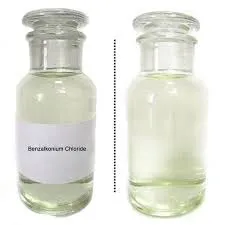hydrolyzed polyacrylamide
Hydrolyzed Polyacrylamide Properties, Applications, and Environmental Considerations
Hydrolyzed polyacrylamide (HPAM) is a water-soluble polymer widely used across various industries due to its unique properties. Derived from polyacrylamide through a process of hydrolysis, HPAM possesses enhanced solubility and structural attributes that make it a versatile agent in fields such as oil recovery, agriculture, wastewater treatment, and cosmetics.
Chemical Structure and Properties
HPAM is formed by the hydrolysis of polyacrylamide, where amide groups (-CONH2) are converted to carboxyl groups (-COOH). This modification results in a partially anionic polymer with varying degrees of hydrolysis, which can be tailored for specific applications. HPAM can have various molecular weights, influencing its viscosity and reactivity. Lower molecular weight polymers provide enhanced solubility, while higher molecular weight types offer greater viscosity and water-retention properties.
One of the principal characteristics of HPAM is its ability to form gels or thick solutions when hydrated. This property is primarily attributed to the hydrogen bonds formed between the polymer chains. In addition, HPAM exhibits excellent viscosity modification capabilities, making it suitable for applications where fluid dynamics and control are critical.
Applications of Hydrolyzed Polyacrylamide
1. Oil and Gas Industry HPAM is extensively used in enhanced oil recovery (EOR) processes. By increasing the viscosity of water injected into oil reservoirs, HPAM aids in improving oil mobility and recovery rates. This process helps in maximizing the extraction of crude oil from underground reservoirs, thus enhancing the efficiency of oil production.
2. Agriculture In agricultural practices, HPAM is utilized as a soil conditioner. It improves soil structure, enhances water retention capacity, and promotes the efficient use of irrigation. Additionally, HPAM can aid in reducing soil erosion and increasing crop yield by maintaining soil moisture levels and providing a conducive environment for root growth.
hydrolyzed polyacrylamide

3. Wastewater Treatment In environmental applications, HPAM serves as a flocculant and a coagulant in wastewater treatment processes. It aids in the aggregation of suspended solids, facilitating their removal and enhancing the clarity of treated water. By promoting the settling of particles, HPAM contributes to improved water quality and compliance with environmental regulations.
4. Cosmetics and Personal Care Products The cosmetic industry employs HPAM for its thickening and stabilizing properties. It acts as a moisturizing agent, providing a desirable texture in creams, lotions, and other personal care formulations.
Environmental Considerations
Despite its numerous applications, the use of hydrolyzed polyacrylamide has raised environmental concerns. One primary issue is the potential for toxicity to aquatic ecosystems if not properly managed. The biodegradation of HPAM can be slow, and there is the possibility of accumulation in water bodies, leading to adverse effects on marine life.
To mitigate these concerns, ongoing research aims to develop more environmentally friendly alternatives and biodegradable formulations of HPAM. Strategies such as modifying the polymer structure to enhance biodegradability while retaining functionality are being explored. Additionally, rigorous monitoring of HPAM usage in industrial practices is essential to ensure that its application does not adversely affect the environment.
Conclusion
Hydrolyzed polyacrylamide stands as a crucial synthetic polymer with diverse applications rooted in its amphiphilic nature and unique properties. As industries harness its benefits, a balanced approach that considers environmental impacts is imperative. The future of HPAM lies in the development of safer, more sustainable alternatives that can fulfill the demands of various applications while safeguarding our ecosystems. Through innovation and responsible usage, HPAM can continue to contribute positively across multiple sectors, ranging from oil recovery to agriculture and environmental protection.
-
Water Treatment with Flocculant Water TreatmentNewsJun.12,2025
-
Polymaleic AnhydrideNewsJun.12,2025
-
Polyaspartic AcidNewsJun.12,2025
-
Enhance Industrial Processes with IsothiazolinonesNewsJun.12,2025
-
Enhance Industrial Processes with PBTCA SolutionsNewsJun.12,2025
-
Dodecyldimethylbenzylammonium Chloride SolutionsNewsJun.12,2025





